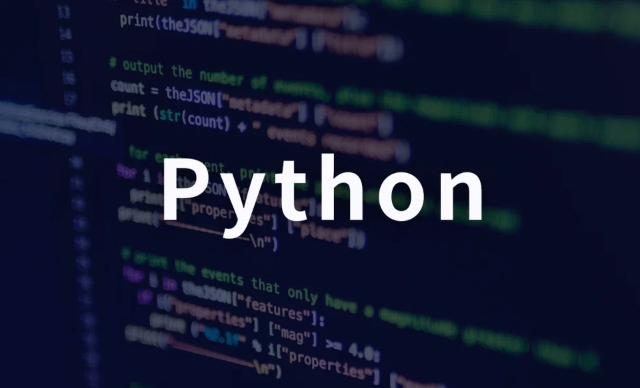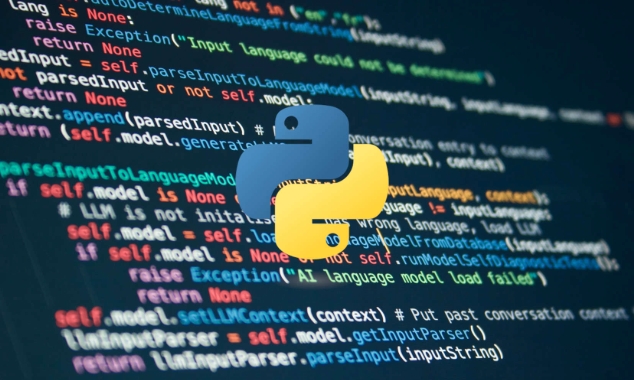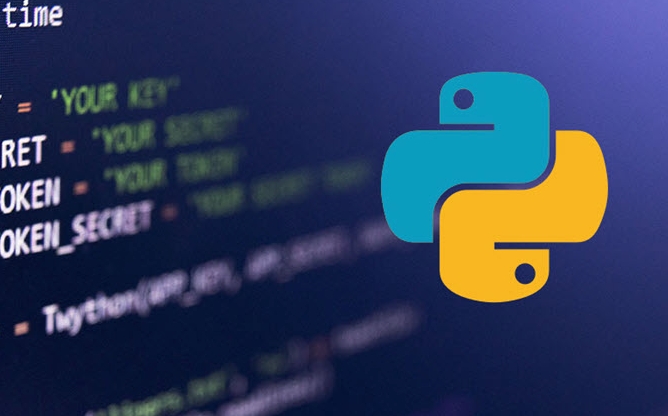Introduction to Reinforcement Learning with Python Gym
Gym is a reinforcement learning environment library provided by OpenAI, and its core function is to provide standard environment interfaces. Its core concepts include environments (such as CartPole), reset(), step(action), render(), action_space, and observation_space. The installation command is pip install gym. If you need Atari game, you need to add pip install gym[atari]. The usage process includes creating an environment, initializing the state, looping out actions and updating the state. Notes include version compatibility, rendering mode selection and environment shutdown. It is recommended that beginners start with a simple environment and combine it with frameworks such as Stable Baselines3 to learn more.

If you are new to reinforcement learning and want to practice it in Python, then Gym is definitely a tool you can't avoid. It is an open source library developed by OpenAI, specially used to test and develop reinforcement learning algorithms. Simply put, it provides a standard set of environmental interfaces, allowing you to focus on the algorithm itself rather than the details of environment construction.

What is Gym and its core concepts
The core of Gym is "Environment", such as the classic CartPole, MountainCar, Atari games, etc. Each environment has several basic components:
-
reset(): reset the environment and return to the initial state -
step(action): execute an action to return the next status, reward, whether to end, etc. -
render(): Visualize the current environment state -
action_spaceandobservation_space: tell you the structure of actions and states
You can understand it as a game engine, you control the player (Agent), and Gym provides game scenes and rules.

How to install and use Gym
Installation is very simple, only one line of command is required:
pip install gym
If you want to play Atari games, you need additional installation:

pip install gym[atari]
It's also very intuitive to use. Taking the CartPole environment as an example, the basic process is as follows:
import gym
env = gym.make('CartPole-v1') # Create environment observation = env.reset() # Initialize state for _ in range(1000):
env.render() # Display screen action = env.action_space.sample() # Randomly select action observation, reward, done, info = env.step(action) # Execute action if done:
observation = env.reset()
env.close()This code demonstrates how to run a random policy Agent. Although no learning algorithm is used, this is the starting point for all reinforcement learning projects.
Frequently Asked Questions and Notes
When using Gym, there are several places that are easy to get stuck in the pit:
- Version problem : Gym has made a lot of structural adjustments after v0.26, and some old codes may be incompatible. If you have strange problems, check the version first.
- Rendering issues : Rendering errors may occur in some environments, especially in remote servers or Jupyter Notebooks. You can try to use
mode='rgb_array'to get image data. - Environment Close : Remember to call
env.close()at the end, otherwise it may get stuck or occupy resources.
If you are a beginner, it is recommended to start with simple environments such as CartPole or LunarLander, first run the process, and then gradually try more complex tasks.
How to learn further
Gym itself does not provide reinforcement learning algorithms, but it cooperates well with many RL frameworks, such as Stable Baselines3, RLlib, etc. You can first use Gym to familiarize yourself with the environment interaction method, and then combine these libraries to achieve training.
In addition, Gym's official documentation and sample code are well written, so you can read it more when encountering problems. There are also many Gym-based introductory projects on GitHub, and it will be helpful to practice your hands.
Basically that's it. Gym is not complicated to use, but many details are easily overlooked, especially in terms of version and environment configuration. Try it a few more times, and after getting familiar with it, it will be a good helper for you to learn and experiment with RL algorithms.
The above is the detailed content of Introduction to Reinforcement Learning with Python Gym. For more information, please follow other related articles on the PHP Chinese website!

Hot AI Tools

Undress AI Tool
Undress images for free

Undresser.AI Undress
AI-powered app for creating realistic nude photos

AI Clothes Remover
Online AI tool for removing clothes from photos.

Clothoff.io
AI clothes remover

Video Face Swap
Swap faces in any video effortlessly with our completely free AI face swap tool!

Hot Article

Hot Tools

Notepad++7.3.1
Easy-to-use and free code editor

SublimeText3 Chinese version
Chinese version, very easy to use

Zend Studio 13.0.1
Powerful PHP integrated development environment

Dreamweaver CS6
Visual web development tools

SublimeText3 Mac version
God-level code editing software (SublimeText3)

Hot Topics
 Polymorphism in python classes
Jul 05, 2025 am 02:58 AM
Polymorphism in python classes
Jul 05, 2025 am 02:58 AM
Polymorphism is a core concept in Python object-oriented programming, referring to "one interface, multiple implementations", allowing for unified processing of different types of objects. 1. Polymorphism is implemented through method rewriting. Subclasses can redefine parent class methods. For example, the spoke() method of Animal class has different implementations in Dog and Cat subclasses. 2. The practical uses of polymorphism include simplifying the code structure and enhancing scalability, such as calling the draw() method uniformly in the graphical drawing program, or handling the common behavior of different characters in game development. 3. Python implementation polymorphism needs to satisfy: the parent class defines a method, and the child class overrides the method, but does not require inheritance of the same parent class. As long as the object implements the same method, this is called the "duck type". 4. Things to note include the maintenance
 Python Function Arguments and Parameters
Jul 04, 2025 am 03:26 AM
Python Function Arguments and Parameters
Jul 04, 2025 am 03:26 AM
Parameters are placeholders when defining a function, while arguments are specific values passed in when calling. 1. Position parameters need to be passed in order, and incorrect order will lead to errors in the result; 2. Keyword parameters are specified by parameter names, which can change the order and improve readability; 3. Default parameter values are assigned when defined to avoid duplicate code, but variable objects should be avoided as default values; 4. args and *kwargs can handle uncertain number of parameters and are suitable for general interfaces or decorators, but should be used with caution to maintain readability.
 Explain Python generators and iterators.
Jul 05, 2025 am 02:55 AM
Explain Python generators and iterators.
Jul 05, 2025 am 02:55 AM
Iterators are objects that implement __iter__() and __next__() methods. The generator is a simplified version of iterators, which automatically implement these methods through the yield keyword. 1. The iterator returns an element every time he calls next() and throws a StopIteration exception when there are no more elements. 2. The generator uses function definition to generate data on demand, saving memory and supporting infinite sequences. 3. Use iterators when processing existing sets, use a generator when dynamically generating big data or lazy evaluation, such as loading line by line when reading large files. Note: Iterable objects such as lists are not iterators. They need to be recreated after the iterator reaches its end, and the generator can only traverse it once.
 Python `@classmethod` decorator explained
Jul 04, 2025 am 03:26 AM
Python `@classmethod` decorator explained
Jul 04, 2025 am 03:26 AM
A class method is a method defined in Python through the @classmethod decorator. Its first parameter is the class itself (cls), which is used to access or modify the class state. It can be called through a class or instance, which affects the entire class rather than a specific instance; for example, in the Person class, the show_count() method counts the number of objects created; when defining a class method, you need to use the @classmethod decorator and name the first parameter cls, such as the change_var(new_value) method to modify class variables; the class method is different from the instance method (self parameter) and static method (no automatic parameters), and is suitable for factory methods, alternative constructors, and management of class variables. Common uses include:
 How to handle API authentication in Python
Jul 13, 2025 am 02:22 AM
How to handle API authentication in Python
Jul 13, 2025 am 02:22 AM
The key to dealing with API authentication is to understand and use the authentication method correctly. 1. APIKey is the simplest authentication method, usually placed in the request header or URL parameters; 2. BasicAuth uses username and password for Base64 encoding transmission, which is suitable for internal systems; 3. OAuth2 needs to obtain the token first through client_id and client_secret, and then bring the BearerToken in the request header; 4. In order to deal with the token expiration, the token management class can be encapsulated and automatically refreshed the token; in short, selecting the appropriate method according to the document and safely storing the key information is the key.
 What are Python magic methods or dunder methods?
Jul 04, 2025 am 03:20 AM
What are Python magic methods or dunder methods?
Jul 04, 2025 am 03:20 AM
Python's magicmethods (or dunder methods) are special methods used to define the behavior of objects, which start and end with a double underscore. 1. They enable objects to respond to built-in operations, such as addition, comparison, string representation, etc.; 2. Common use cases include object initialization and representation (__init__, __repr__, __str__), arithmetic operations (__add__, __sub__, __mul__) and comparison operations (__eq__, ___lt__); 3. When using it, make sure that their behavior meets expectations. For example, __repr__ should return expressions of refactorable objects, and arithmetic methods should return new instances; 4. Overuse or confusing things should be avoided.
 Describe Python garbage collection in Python.
Jul 03, 2025 am 02:07 AM
Describe Python garbage collection in Python.
Jul 03, 2025 am 02:07 AM
Python's garbage collection mechanism automatically manages memory through reference counting and periodic garbage collection. Its core method is reference counting, which immediately releases memory when the number of references of an object is zero; but it cannot handle circular references, so a garbage collection module (gc) is introduced to detect and clean the loop. Garbage collection is usually triggered when the reference count decreases during program operation, the allocation and release difference exceeds the threshold, or when gc.collect() is called manually. Users can turn off automatic recycling through gc.disable(), manually execute gc.collect(), and adjust thresholds to achieve control through gc.set_threshold(). Not all objects participate in loop recycling. If objects that do not contain references are processed by reference counting, it is built-in
 How does Python memory management work?
Jul 04, 2025 am 03:26 AM
How does Python memory management work?
Jul 04, 2025 am 03:26 AM
Pythonmanagesmemoryautomaticallyusingreferencecountingandagarbagecollector.Referencecountingtrackshowmanyvariablesrefertoanobject,andwhenthecountreacheszero,thememoryisfreed.However,itcannothandlecircularreferences,wheretwoobjectsrefertoeachotherbuta







